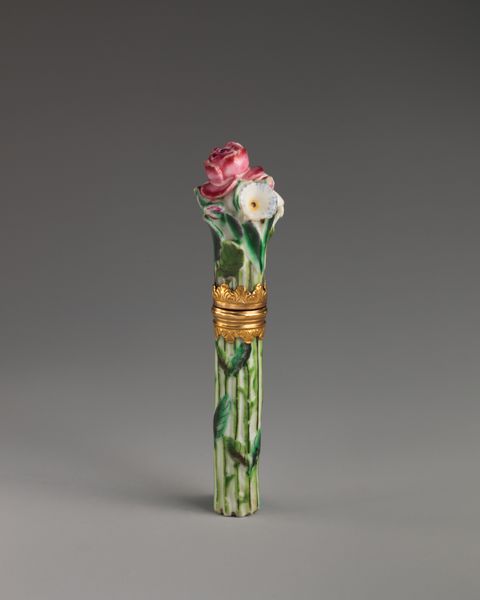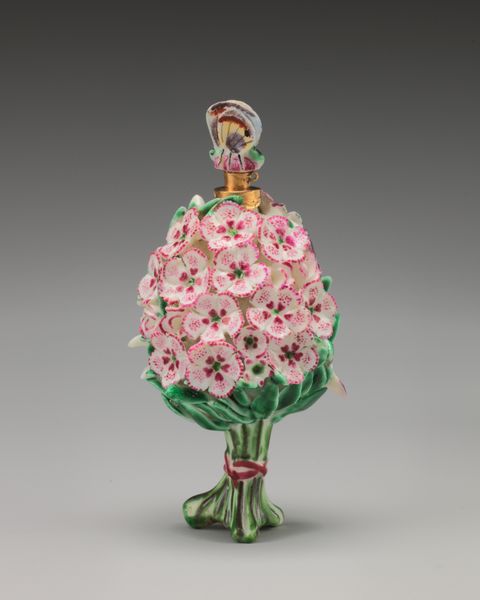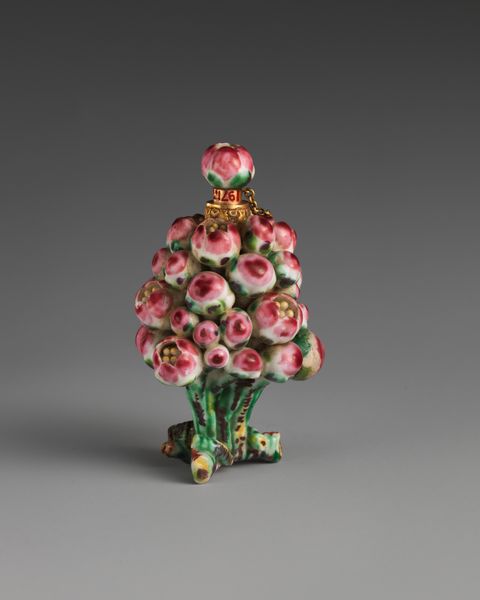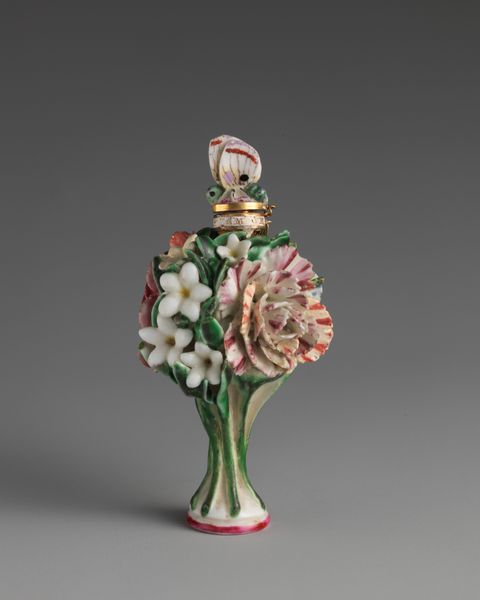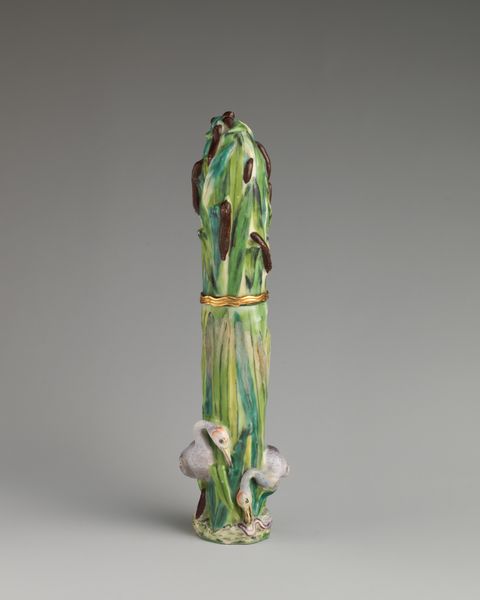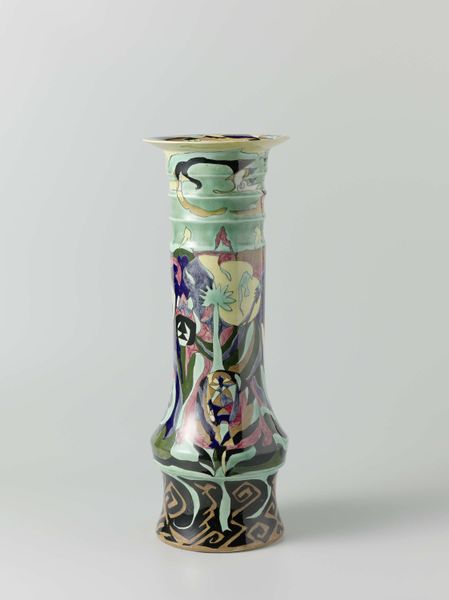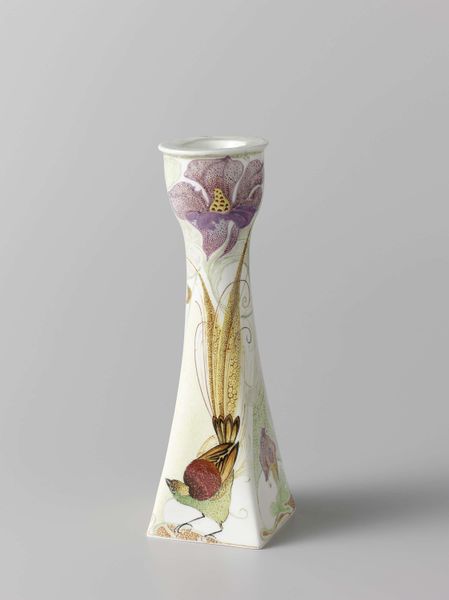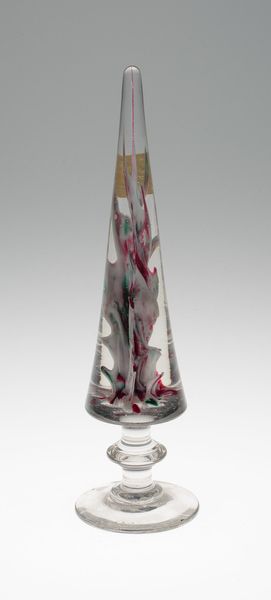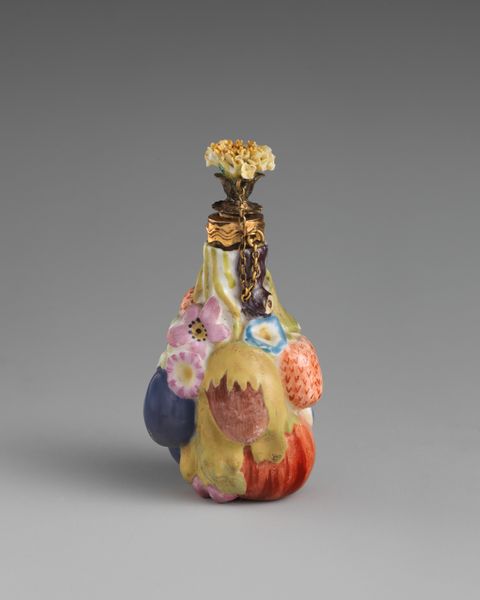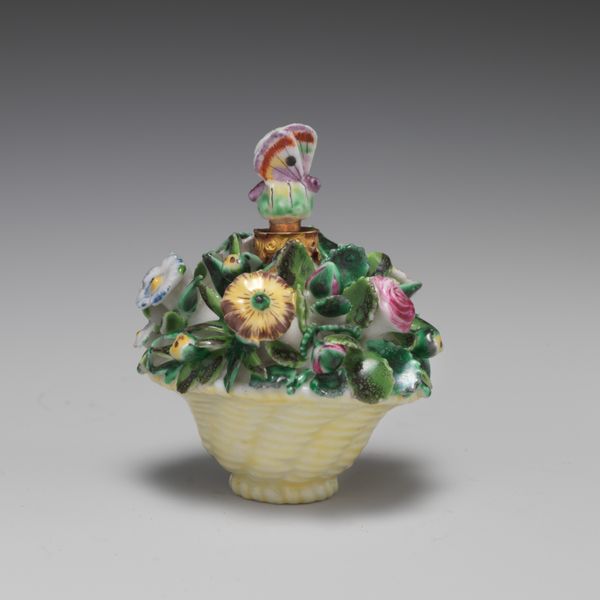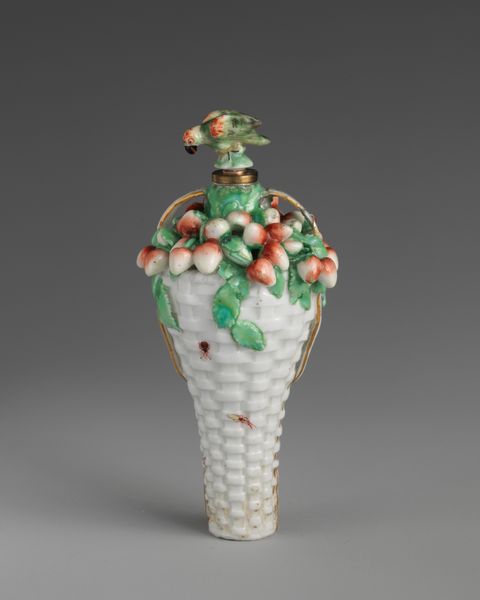
ceramic, porcelain, sculpture
#
ceramic
#
porcelain
#
sculpture
#
ceramic
#
decorative-art
#
rococo
Dimensions: Overall: 4 5/8 × 1 3/4 in. (11.7 × 4.4 cm)
Copyright: Public Domain
Curator: Isn't it charming? This is "Nosegay", a porcelain sculpture from the Saint James's Factory, likely crafted between 1745 and 1760. Editor: It has such a sweet, almost naive quality to it. The pastel colours are so gentle, and the form is quite pleasing to the eye, wouldn’t you agree? Curator: Indeed. These decorative arts pieces were extremely popular among the elite, symbolizing wealth, leisure, and refined taste within the burgeoning consumer culture of 18th-century Europe. The factories like Saint James were popping up to fill that specific need. Editor: Visually, the vertical stripes juxtaposed with the flourish of the floral arrangement create a delightful contrast. It almost appears as if nature is striving to break free from structure. The small scale is quite lovely too. It feels very intimate. Curator: Certainly. The Rococo period valued ornamentation, as we see here, which moved away from formal Baroque styles into something more graceful. "Nosegay," as an object, served as a miniature luxury, reflecting that shift towards intimate and personal expression within art and society. Imagine this as the object to pass on to generations with a story behind. Editor: You can truly see how carefully the piece has been molded to bring out detail and to capture the light across its different sections, I like also the simplicity of forms and colors used. All features come together to evoke a strong feeling of calm and serenity. Curator: Well, what appears simple required highly specialized skills and materials. English porcelain manufacturers were actively competing with continental producers for both market share and reputation, so this "Nosegay" also reflects a society concerned with economic advancement, where the ability to produce and possess these goods served a cultural function. Editor: I'm looking at it in terms of shapes, materials and colours... It does have all the hallmarks of an extremely precious and luxurious product, it´s really quite well preserved. I imagine touching it to appreciate its delicacy. Curator: I think what strikes me most is the complex interplay between artistic intention, economic forces, and cultural symbolism embedded within what seems like a simple porcelain flower. Editor: From a formal point of view, I´m really admiring its elegance and subtle beauty; something simple in concept that makes it extremely valuable as a work of art.
Comments
No comments
Be the first to comment and join the conversation on the ultimate creative platform.
